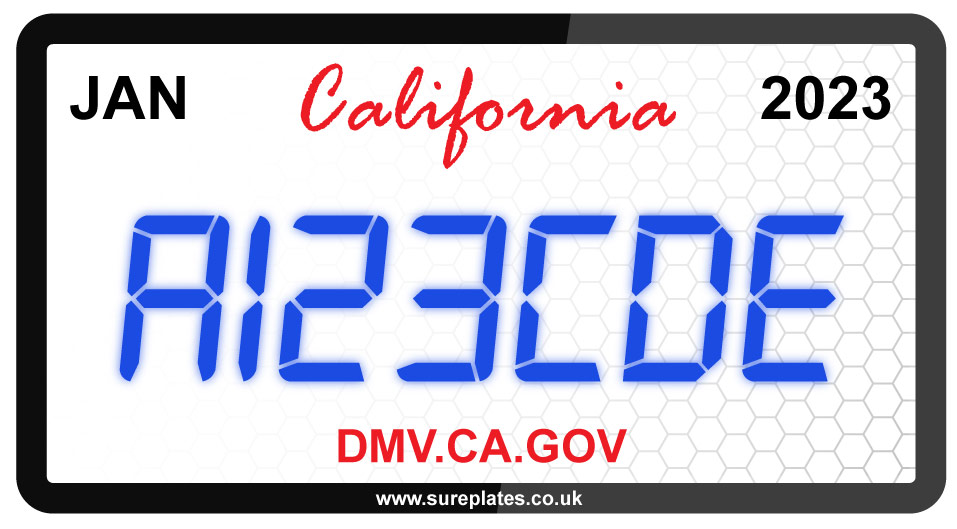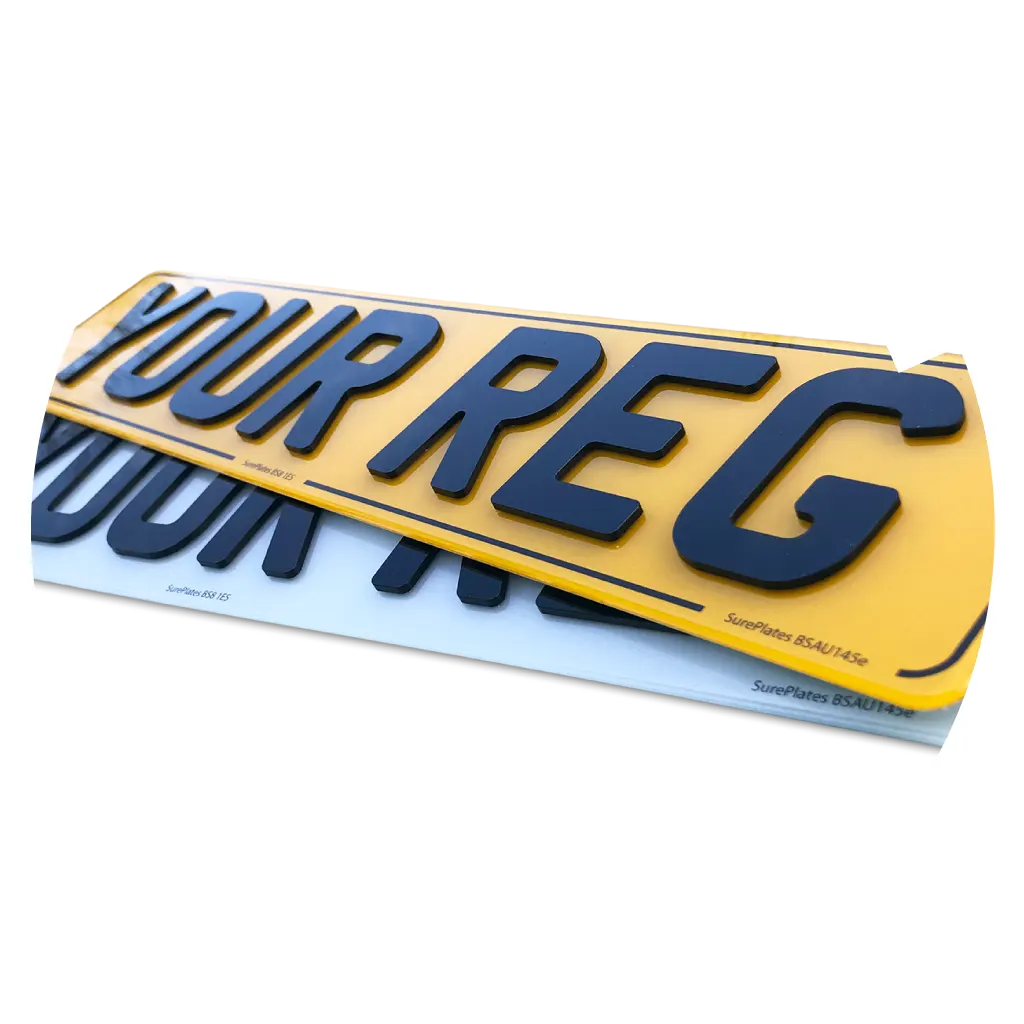Digital number plates, also known as electronic license plates, have been trialled in the United States. In 2017, California’s Electronic License Plate Pilot Program tested the issue of electronic plates to a limited number of volunteers. The project was funded by US taxpayers and cost $20m USD.

The tests proved positive and after a successful deployment in California, both Michigan and Arizona legalised electronic registration plates. However, other states such as Florida rejected the idea.
There is currently only one supplier of digital plates (https://reviver.com/) in the USA.
What is a digital number plate?
Unlike a traditional number plate with printed characters, a digital plate is a plate with a fully electronic digital display much like a tablet. A digital plate is connected to the vehicle’s electronics.
A digital plate shows your registration number on a backlit screen with other relevant information on display as well.
These types of plates need a power supply to work, which can be in the form of a battery or a direct connection to your vehicle’s power supply.
How do digital plates compare to traditional number plates?
By their design, digital plates are very different in construction to a standard number plate. Regular number plates are printed and laminated with a plastic or metal material, or stamped in a press. Digital plates are more of a tablet-like device that require an operating system, display, power supply, and some kind of connection to data.
The following table shows the main differences:
| Standard plate | Digital plate | |
| Plate construction | Acrylic, ABS plastic, or metal | Digital tablet-like construction |
| Font | Printed, gel, or 3D | Digital font only |
| Can be reflective? | Yes | No |
| Sizes available | Any size, can be cut to order | Limited to manufacturer production capability, not customisable |
Clearly a very different technology with some glaring differences. Digital plates are approved in 3 states in the USA but have not yet made an appearance in the United Kingdom.
Customise your 3D number plates
Build unique number plates with our intuitive and fully interactive number plate builder.
Build Your 3D Number Plates
Advantages & benefits of digital plates
There are some definite advantages to using a digital plate on your vehicle, including security and fraud prevention. In no particular order, some of the possible advantages include:
Security & access
In theory, a digital plate could be equipped with authentication systems that are connected directly to the vehicle and could be pre-programmed with the vehicle registration number. If removed from the vehicle, the plate could shut itself off or display “STOLEN”, deterring would-be thieves. It should be noted that digital plates are still very expensive so could be stolen and dismantled for parts. Would you leave a tablet stuck on the outside of your car?
In theory, a digital plate could interface directly with security systems such as car park barriers or other properties, allowing access and instant payment.
Convenience
A digital plate could allow the registration number to be updated instantly without needing to renew the whole plate. People who purchase personalised registration numbers would benefit the most from this.
This would need additional security and possibly a connection to DVLA, otherwise owners could simply change their registration number at their leisure.
Recyclable
Unlike a regular number plate, a digital plate can be recycled and placed on another vehicle when discarded or unwanted. The components can also be recovered and recycled, which cannot be done with standard plates in the UK.
Disadvantages of digital registration plates
Unfortunately, there are quite a few disadvantages of a digital plate which make them less convenient. These include:
Cost
The digital plates currently on the market in the USA are very expensive, costing hundreds of US dollars. Compared to the UK where replacement number plates cost around £20 for a pair.
Vulnerability
Digital plates are electronic devices like your phone or tablet, but much simpler. As such, they are vulnerable to hacking and bugs in the hardware & software.
Power needed
A plate that requires a power supply is by design less reliable than a traditional plate. What if the power cables or connections get damaged and the display turns off? You’ll have no plates!
If the plate is ‘on’ all the time, it drains the battery. Some people don’t drive all that often so it is not inconceivable that a large, bright LED display on the front & back of your car could drain the battery.
Furthermore, if the plate is ‘off’ when you switch off the engine, your car won’t be displaying any registration marks which is illegal. Your vehicle must be permanently affixed with registration plates while on public roads.
A pair of very bright displays stuck on your car may also decrease your fuel efficiency slightly.
Maintenance
Unfortunately, being an electronic device, they will need some maintenance. This will include making sure there are no cracks or damage to the screen, keeping the software up to date, and cleaning the digital display.
They may also be more vulnerable to pressure washers, car washes, ice, stone chips, screens cracking, and generally getting dirty.
Additionally, wrong-doers could easily crack the display, making the plate unreadable and in need of an expensive replacement.
Legibility
Digital plates may be harder to read and more difficult for cameras to detect. Bright sunlight makes digital displays harder to see even when they’re in the palm of your hand, so the display would need to be very bright and of a high enough resolution to show crisp and clear registration marks.
Installation
Regular plates just need to be drilled and screwed in. Digital plates on the other hand need to be connected to your car’s battery, with wires being routed and concealed under the carpets and body work.
Unless a digital plate is self-contained and pre-programmed with your data, it may also need to connect to the vehicle’s computer (ECU) or some other system.
Are digital plates legal in the UK?
As they don’t exist in the UK, the question of the legality of digital plates is somewhat irrelevant. Digital plates as they exist in the USA would not be road legal in the UK as they are not built to comply with our regulations.
The main reason digital plates are not possible in the UK is because our number plates must be retroreflective – they must meet very specific reflectivity and luminance requirements. Reflectivity is not possible with a digital LED display, so any plate made this way would not be compliant with the regulations.
Regulations can certainly change to incorporate a digital plate, but there would need to be some major benefits and quite a bit of pressure on DVLA and parliament to get those changes made. Unfortunately, the benefits of digital plates aren’t very compelling at this stage and some of the benefits such as the possible security features could be incorporated into other parts of your car for a much lower cost.
Summary
Digital plates are available in some states in the USA but have been rejected in others. They are expensive and offer some possible benefits over traditional plates, but there are quite a few disadvantages.
A digital plate could never outlast a traditional acrylic or aluminium plate. Stone chips, cracks, ice damage and general wear and tear will break a digital device fairly quickly. How long would an iPad last if you stuck it to the front of your car? That is, if it wasn’t stolen first.
The regulations for number plates in the United Kingdom prevent the use of a digital display altogether since they have to be retroreflective – a feature not possible with digital LED displays.
While interesting, the disadvantages seem to outweigh the benefits of a digital plate and it is unlikely we are going to see them on our roads any time soon.